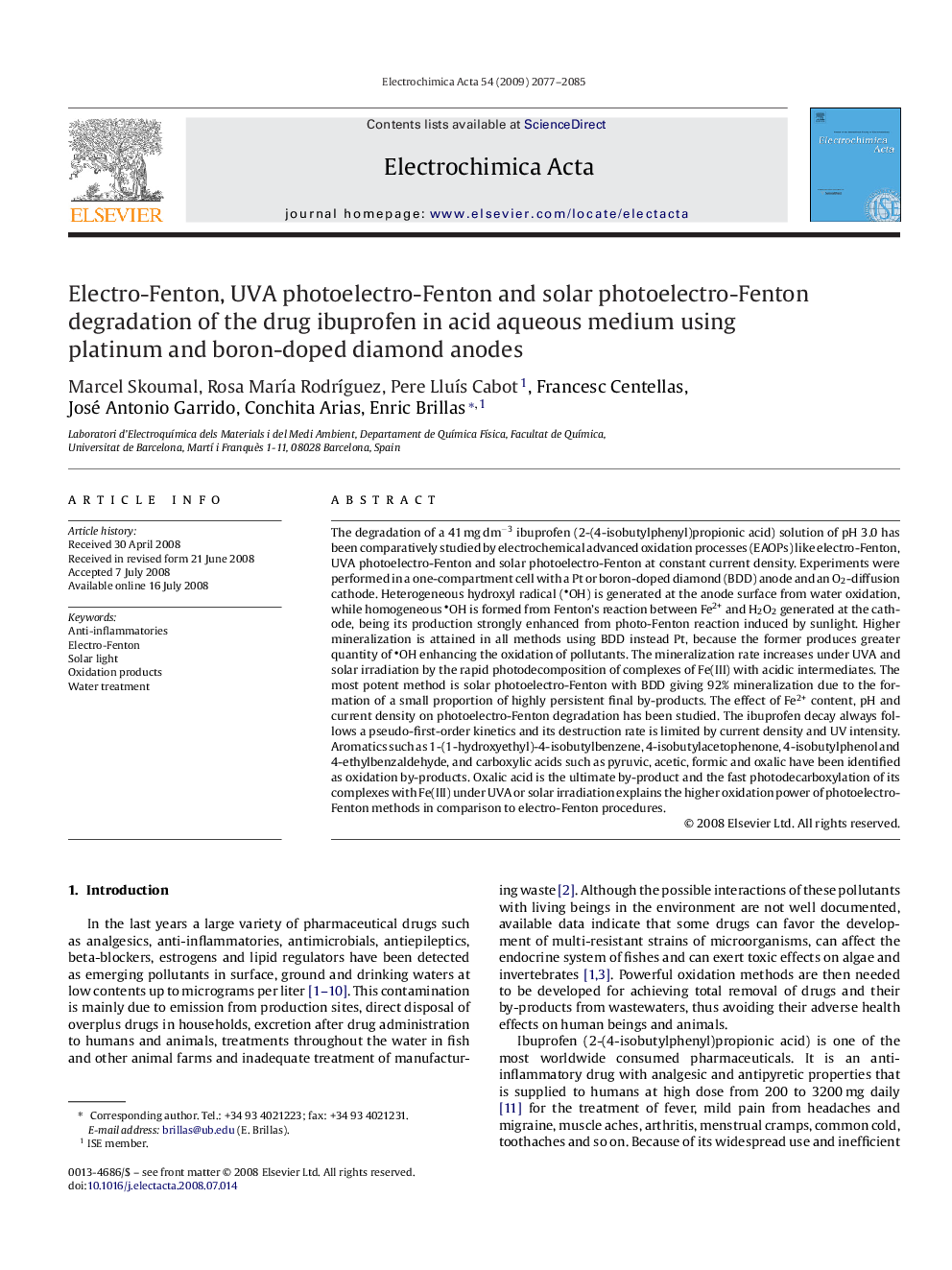| کد مقاله | کد نشریه | سال انتشار | مقاله انگلیسی | نسخه تمام متن |
|---|---|---|---|---|
| 193007 | 459758 | 2009 | 9 صفحه PDF | دانلود رایگان |

The degradation of a 41 mg dm−3 ibuprofen (2-(4-isobutylphenyl)propionic acid) solution of pH 3.0 has been comparatively studied by electrochemical advanced oxidation processes (EAOPs) like electro-Fenton, UVA photoelectro-Fenton and solar photoelectro-Fenton at constant current density. Experiments were performed in a one-compartment cell with a Pt or boron-doped diamond (BDD) anode and an O2-diffusion cathode. Heterogeneous hydroxyl radical (OH) is generated at the anode surface from water oxidation, while homogeneous OH is formed from Fenton's reaction between Fe2+ and H2O2 generated at the cathode, being its production strongly enhanced from photo-Fenton reaction induced by sunlight. Higher mineralization is attained in all methods using BDD instead Pt, because the former produces greater quantity of OH enhancing the oxidation of pollutants. The mineralization rate increases under UVA and solar irradiation by the rapid photodecomposition of complexes of Fe(III) with acidic intermediates. The most potent method is solar photoelectro-Fenton with BDD giving 92% mineralization due to the formation of a small proportion of highly persistent final by-products. The effect of Fe2+ content, pH and current density on photoelectro-Fenton degradation has been studied. The ibuprofen decay always follows a pseudo-first-order kinetics and its destruction rate is limited by current density and UV intensity. Aromatics such as 1-(1-hydroxyethyl)-4-isobutylbenzene, 4-isobutylacetophenone, 4-isobutylphenol and 4-ethylbenzaldehyde, and carboxylic acids such as pyruvic, acetic, formic and oxalic have been identified as oxidation by-products. Oxalic acid is the ultimate by-product and the fast photodecarboxylation of its complexes with Fe(III) under UVA or solar irradiation explains the higher oxidation power of photoelectro-Fenton methods in comparison to electro-Fenton procedures.
Journal: Electrochimica Acta - Volume 54, Issue 7, 28 February 2009, Pages 2077–2085